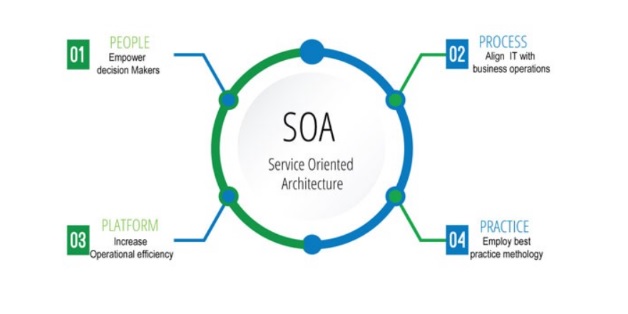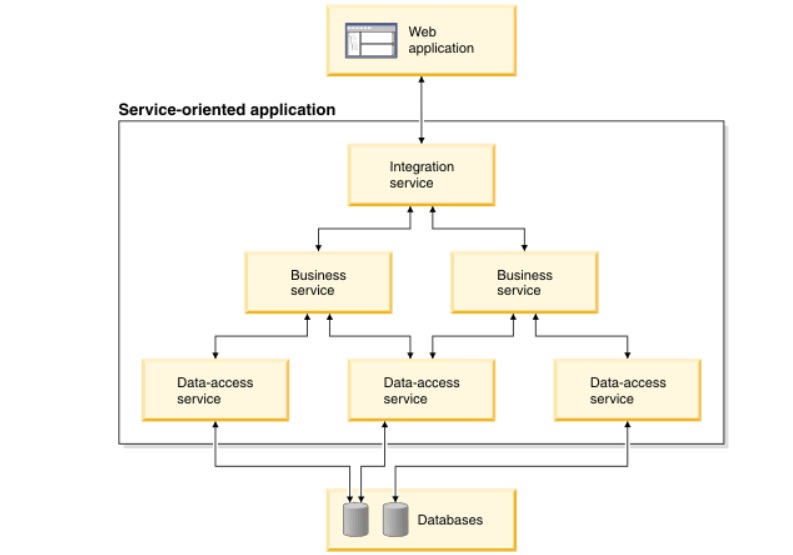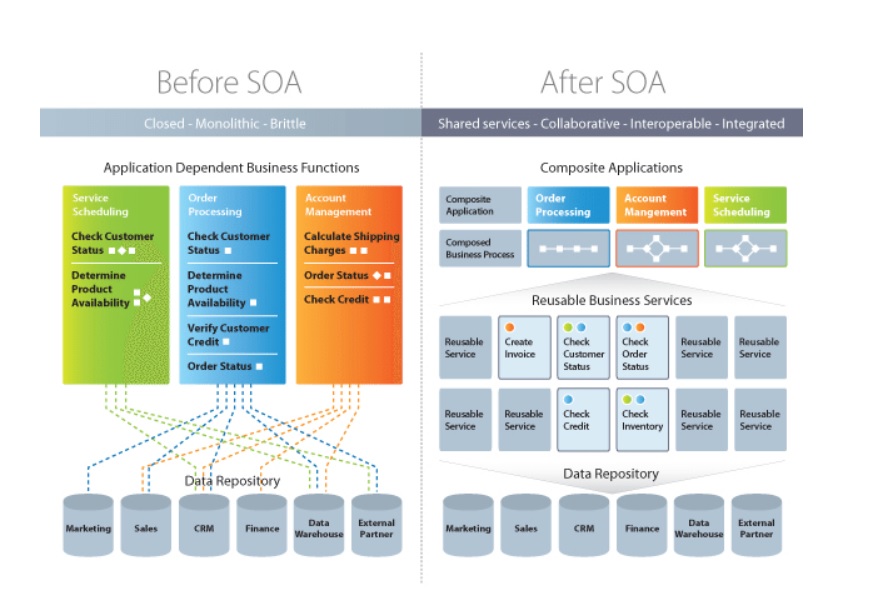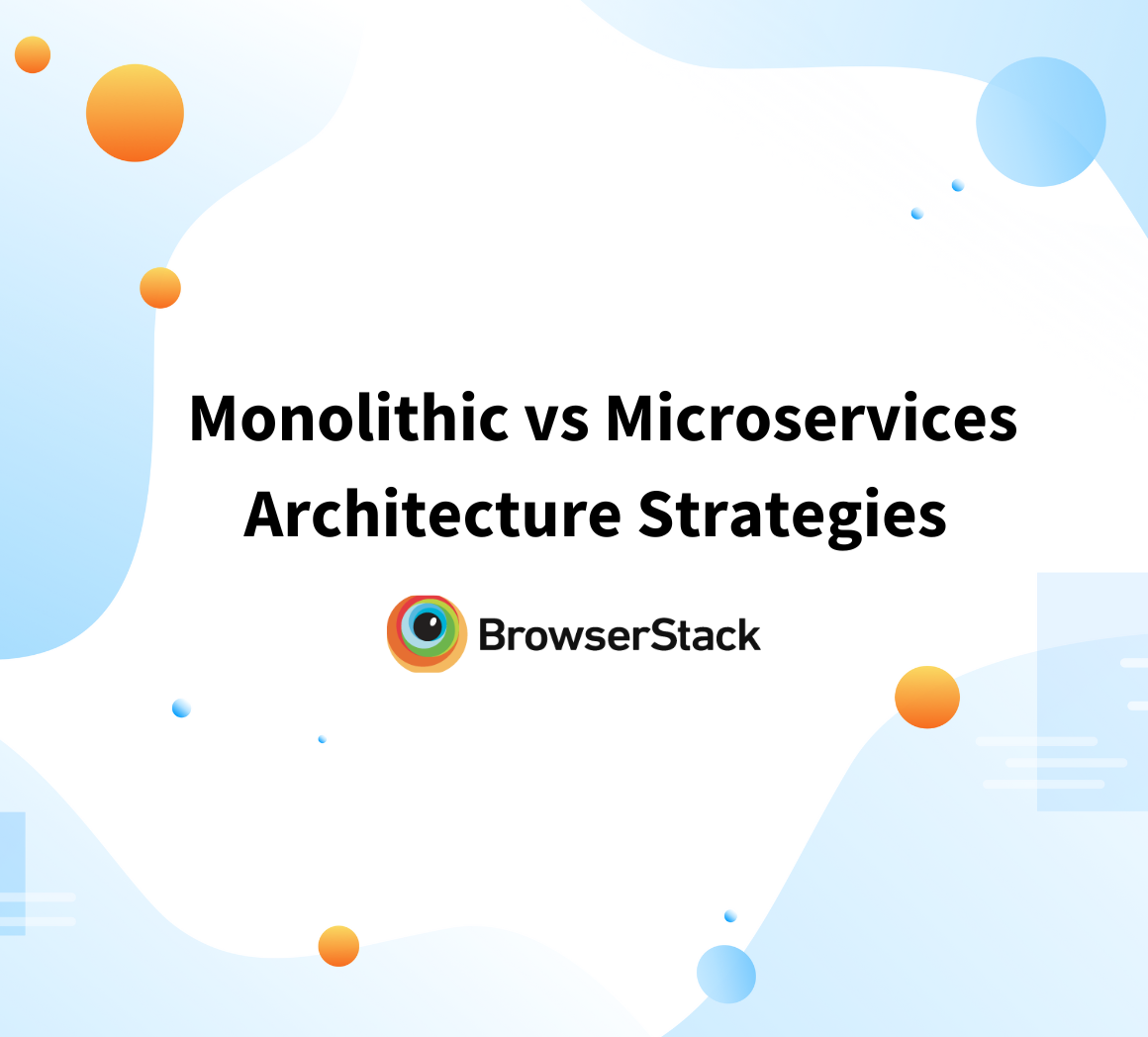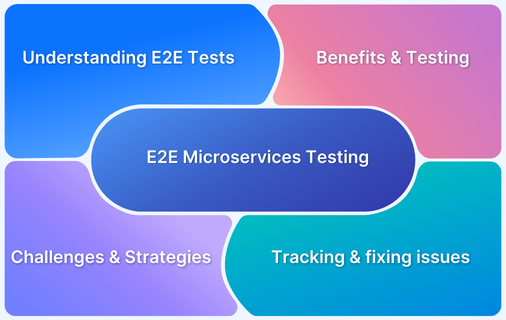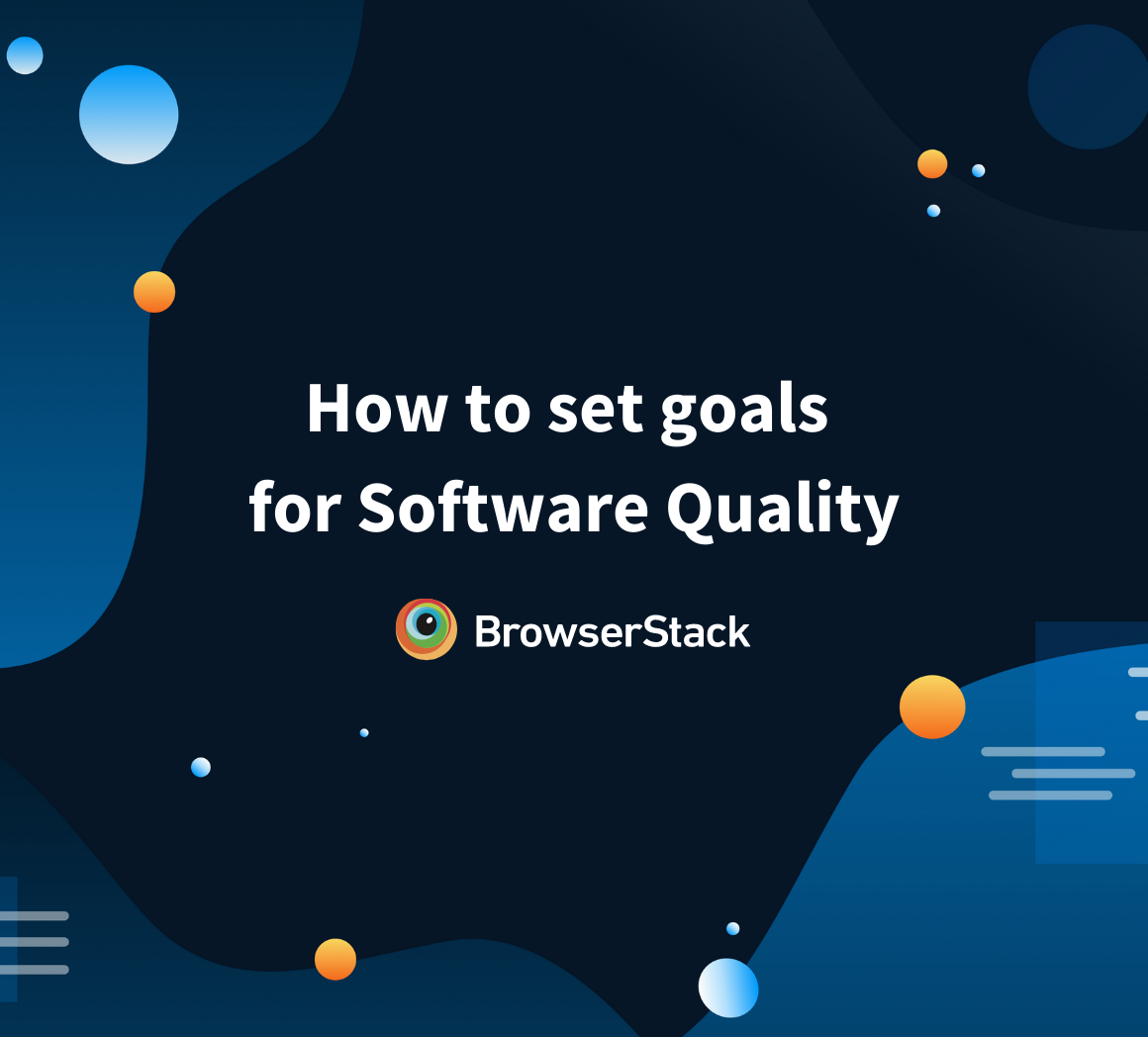Test Strategies for SOA (Service Oriented Architecture) Applications
By Sourojit Das, Community Contributor - December 13, 2024
Modern software applications scarcely work in a standalone capability. They must be able to securely integrate distributed data sources and engage with different ecosystems. Managing user expectations in such a scenario becomes a major challenge for modern enterprise software solution providers.
In cases like these, SOA has emerged as one of the leading architectural design patterns that can help overcome such a problem. And though some people use terms SOA and Web services interchangeably, they are not the same. Most SOA implementations are built using web services, but there can be non-SOA web services as well.
- What is Service-Oriented Architecture (SOA)?
- What is SOA Testing?
- Why is SOA Testing Important?
- How Service-Oriented (SOA) Architecture works?
- Benefits of SOA Architecture for applications
- Differences between SOA Testing and Normal Application Testing
- What is SOA Testing, and Why is it important
- Test Strategies for SOA Architecture Applications
- SOA Testing Methods
- Challenges while implementing SOA Testing Strategies
- SOA Testing Tools
What is Service-Oriented Architecture (SOA)?
Service-Oriented Architecture (SOA) is a software design paradigm which allows software components to provide services to other software components through a communication protocol over a network. With the primary advantage of being vendor and technology-independent, SOA allows for seamless communication or even the coordination of activities over a distributed system.
This flexibility has allowed its use in many mobile apps and games. Since it is being able to be a service provider and consumer at the same time. SOA is used even in the military for deploying situational awareness systems.
While microservice architecture has taken the computing world by storm, SOA applications have still retained their core niche. This makes SOA the second most popular approach to system design.
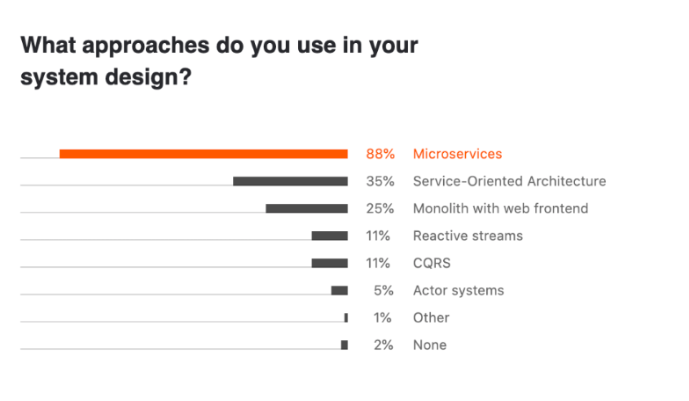
The main characteristics of SOA systems may vary from organisation to organisation, but the Six core tents that define any capable SOA system are:
- Business value
- Strategic goals
- Intrinsic interoperability
- Shared services
- Flexibility
- Evolutionary refinement
What is SOA Testing?
SOA (Service-Oriented Architecture) Testing focuses on validating the functionality, performance, and reliability of services within an SOA-based system.
In SOA, applications are built as interconnected services that can operate independently or as part of a larger system. These services communicate using standardized protocols like REST, SOAP, or XML, making them reusable and scalable.
SOA Testing involves verifying the integration points, communication protocols, service responses, and how well services interact with other components of the system. It ensures the entire architecture works cohesively while maintaining individual service reliability.
Why is SOA Testing Important?
SOA testing plays a pivotal role in the lifecycle management of services, ensuring that quality aspects are maintained across different implementations.
Its significance lies in its ability to validate and address the complexities inherent in service-oriented architectures, which form the backbone of many modern enterprise systems.
Here’s why it is crucial:
- Ensures Service Quality Across Layers: SOA applications are multi-layered, involving web services, legacy applications, custom components, and third-party services. Testing validates each layer, ensuring the entire architecture works seamlessly.
- Manages Complex Interactions: SOA web services facilitate client-server interactions that involve numerous moving parts. Verifying these interactions ensures that services perform reliably, even under complex use cases.
- Maintains Enterprise System Stability: OA forms the backbone of IT infrastructure for many businesses. Testing ensures smooth operations, as even a single failure in a service can disrupt the entire network, leading to financial losses and damage to reputation.
- Validates End-to-End Functionality: From client requests to backend responses, SOA testing ensures that the entire process functions as expected. For example, in a stock market application it validates data retrieval, processing, and response delivery seamlessly across services.
- Broadens Scope Beyond Web Service Testing: Unlike traditional web service testing, SOA testing focuses on the overall architecture, ensuring interoperability, scalability, and reliability across different components and layers.
- Supports Legacy and Third-Party Integration: Many SOA applications rely on integrating legacy systems and third-party services. Testing ensures these components function harmoniously within the architecture.
- Critical for Business Continuity: For enterprises that depend on their IT systems, SOA testing safeguards against disruptions, ensuring that operations continue without downtime or service degradation.
How Service-Oriented (SOA) Architecture works?
There are three main roles performed by the building blocks of any SOA application, viz. Service provider, service broker, and service requester/consumer.
- The Service Provider works together with a service registry to investigate the security, availability, modifications required, etc for the services being provided. They also determine service categories and trading agreements that are necessary.
- Service Brokers provide information about a service to those requesting it.
- The Service Requester locates information in the service broker registry and attaches them to the service provider. They may have the capability to access multiple services based on their configuration.
Multiple technologies can be used to implement SOA Architecture, depending on the business needs and the end goal in sight. The central design paradigm focuses on some form of web services that allow the core components to be accessible to each other over standard internet protocols.
One of the most popular such instances is SOAP, which is short for Simple Object Access Protocol. It has gained popularity since 2003 and has become the go-to standard for creating SOA applications.
Other options like Jini, COBRA, and REST are also being used. Messaging techniques like ActiveMQ, Apache Thrift, and SORCER are also being implemented to achieve technology independence.
SOA applications are often composed of services in a hierarchy, as seen below:
SOA applications are often organized in a hierarchical structure comprising three layers:
- Integration Services (Top Layer): It contains several integration services that control a flow of activities. For example, processing insurance coverage requests for a vendor. These integration services, in turn, call on business services.
- Business Services (Middle Layer): It completes a low-level business task. For example, an integration service may want to verify the details of an insured customer for a certain premium. Each business service will return a computed value that can help decide whether to issue the policy.
- Data Access Services (Bottom Layer): It has data access services that handle the CRUD operation to and from the data storage. These are usually accessed to assign values to the logic for computation.
Benefits of SOA Architecture for applications
There are numerous benefits of using the SOA paradigm for designing applications.
- Using SOA leads to the creation of reusable code units. This decreases both the time spent on the development process and eliminates the need to start from scratch whenever you create a new service.
- The use of a standard communication protocol allows the different systems and functions to work independently of each other and also navigate firewalls. The latter feature allows companies to share vital services without the need to overhaul the existing security systems.
- It allows for scalability as it has reduced client-service interaction. This prevents the overheads due to dependencies and allows the software to be greatly scalable.
- This, in turn, reduces costs as minimal analysis, rework, and overheads are required to develop custom applications.
Differences between SOA Testing and Normal Application Testing
This comparison highlights how SOA Testing deals with the broader architecture, integrations, and interdependencies, while Normal Application Testing focuses on individual applications or modules.
| Aspect | SOA Testing | Normal Application Testing |
|---|---|---|
| Focus | Tests services within a service-oriented architecture, including integration, communication, and data exchange. | Tests a standalone application’s functionality, performance, and usability. |
| Scope | Broader scope covering multiple layers such as service providers, brokers, and consumers. | Narrow scope focused on the application’s UI, database, and internal logic. |
| Components Tested | Validates web services, APIs, middleware, and backend systems. | Tests front-end UI, application logic, and database interactions. |
| Complexity | High complexity due to multi-layered architecture and multiple moving parts. | Less complex as it focuses on a single application or module. |
| Dependencies | Involves testing third-party services, legacy systems, and custom components. | Focuses on the application under test with fewer external dependencies. |
| Communication Testing | Requires verifying communication protocols like SOAP, REST, and XML. | Limited to testing internal communication between components. |
| Testing Tools | Uses specialized tools like SoapUI, Postman, and JMeter for API and service testing. | Uses tools like Selenium, QTP, or LoadRunner for UI and functional testing. |
| Test Scenarios | Includes end-to-end validation across services, integration layers, and data flows. | Includes user-centric scenarios focused on the application’s intended features. |
| Data Handling | Tests data transformations, exchange formats, and storage in distributed environments. | Primarily tests database operations and application-level data validation. |
| Impact of Failures | Service failures can cascade across the system, affecting multiple applications. | Failures are localized to the application being tested. |
What is SOA Testing, and Why is it important
SOA testing forms an important aspect of the lifecycle management of the service in question and helps the organization address service quality aspects across different implementations.
SOA testing focuses on verifying the web services that act as the interface between Client-Server interactions. This can be somewhat complex as SOA applications have a lot of moving parts that can be quite challenging to test. There need to be service validations made across the entire multi-layered architecture.
SOA testing often involves testing legacy applications, custom components, and even third-party services across these layers.
A simple example can be a user testing a stock market application. They provide stock details to the local system. This connects to a service that fetches the required details and sends them back to the user.
The SOA web services communicate with the necessary backend data store as well to process this request and generate an appropriate response.
While most people consider SOA testing to be simply a form of web service testing, it actually deals with the overall architecture and thus is much broader in scope.
Most businesses today depend on their IT infrastructure for day-to-day operations, and SOA applications constitute the primary backbone for these enterprise systems. The smooth functioning of these systems is vital as any single error can destabilize the entire network and result in loss of money as well as goodwill.
Test Strategies for SOA Architecture Applications
To ensure the seamless functionality, performance, and reliability of SOA-based systems, a comprehensive testing strategy is essential. This involves carefully planned and executed testing processes across all architectural layers.
1. Test Planning Approach
A robust test planning approach sets the foundation for effective SOA testing. Key aspects include:
1. Requirement Analysis: Identify and document all business and technical requirements for the services, including functional, security, and performance aspects.
2. Test Scope Definition: Define the scope of testing for service consumers, process layers, and service layers, ensuring complete coverage of the architecture.
3. Test Environment Setup: Establish an environment replicating the production setup with realistic service dependencies, including legacy systems and third-party integrations.
4. Service Mapping and Dependency Analysis: Map out service interactions and dependencies to understand the integration points and critical areas requiring validation.
5. Test Case Design: Create detailed test cases focusing on:
- Individual services (unit testing).
- Integration points between services.
- End-to-end workflows across the SOA layers.
6. Selection of Testing Tools: Identify appropriate tools for service validation, performance testing, and automation, such as SoapUI, Postman, or JMeter.
2. Test Execution Approach
Effective test execution ensures that planned tests are carried out systematically, covering all identified areas. Key steps include:
- Service-Level Testing: Validate individual services using a request-response approach. Ensure functionality aligns with business requirements and error handling works for negative scenarios.
- Integration Testing: Test service interactions across layers, verifying seamless communication and data flow.
- Performance Testing: Measure service scalability, load-handling capabilities, and response times under various conditions.
- Security Testing: Evaluate authentication mechanisms, data encryption, and protection against vulnerabilities like SQL injection or CSRF.
- Regression Testing: Validate system stability after incremental builds, leveraging automation tools to ensure consistency across releases.
- End-to-End Testing: Execute functional and non-functional tests on the entire system, including UI and backend integrations, to confirm readiness for deployment.
Read More: How to set up QA processes from scratch
SOA Testing Methods
SOA testing involves a variety of methods to ensure the architecture’s functionality, reliability, and performance. Each method focuses on specific aspects of the system, ensuring comprehensive validation of services, integrations, and workflows.
Testing Methods:
- Unit Testing
- Integration Testing
- Functional Testing
- Performance Testing
- Security Testing
- Regression Testing
- End-to-End Testing
- Compliance Testing
Challenges while implementing SOA Testing Strategies
Since SOA applications can rapidly increase in size and complexity very quickly, it can become a real challenge to verify all the moving parts.
Some major challenges can be:
- The difficulty in simulating test environments to conduct testing
- The components being tested can be from different vendors, which can lead to further complexities.
- The more the number of components and services being integrated, the more complex the testing.
- Reproducing issues can become tricky, given the nature of the complex models.
SOA Testing Tools
- SOAPUI: It is an open-source tool that is used for web services testing. It can perform both functional as well as performance tests and even some security testing.
- Apache JMeter: It is another open-source tool that helps analyze and measure the performance of REST/SOAP invocations. This helps automate user stories and allows the tester to run the same test with different users and even parameterization.
Conclusion
An effective SOA test strategy must incorporate all the aspects of the SOA Architecture stack. Once specific tools like SOAPUI or Apache JMeter have been used, it is important to conduct E2E testing for the application as a whole.
The best option in these cases is for a cloud-based testing service that provides real device, browsers, and operating systems. BrowserStack offers 3000+ real browsers and devices for manual (BrowserStack Live) and automated testing (BrowserStack Automate).
